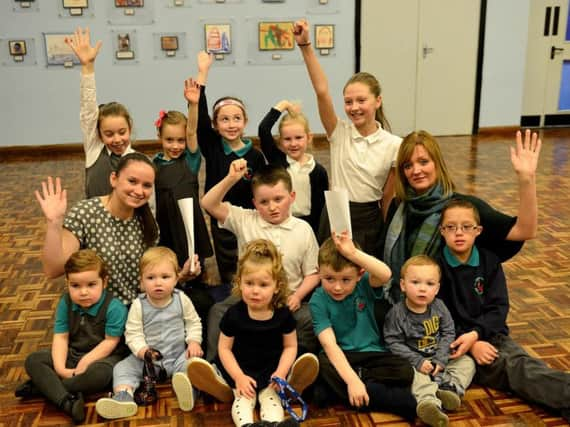Hartlepool Key Stage 2 results in line with national average


Statistics released by the Department of Education put the town’s schools on the same level as the rest of the country.The town’s average number of Year 6 children gaining the expected combined level in reading, writing and maths, was 53%, the same as the national average.Coun Alan Clark, lead member for children’s services at Hartlepool Borough Council, said: “Given the introduction of much more rigorous testing in primary schools this year, I think this is a very strong outcome for Hartlepool.“Results in the individual subjects of reading, writing and maths are at least in line with the national average or above it. For example, 76% of children are reaching the expected standard in writing compared to the national average of 74%, whilst the figure in maths is 72% compared to 70% nationally.“Figures also show that the progress made by Hartlepool children throughout Key Stage 2 is either at the national average or above.“Despite the new challenging standards, no Hartlepool schools are below the minimum expected standard – or even close to it – and there are no “coasting” schools, the official definition for schools where for three years in succession standards and progress have not been good enough. These figures give us a solid foundation to move forward as we strive for results that are consistently above the national average – the position we were in under the previous assessment process.”St John Vianney RC School is celebrating an amazing 93% of children getting the combined expected level in reading, writing and maths.At the King Oswy Drive school, 93% of youngsters got the expected level in reading, 100% in writing and 100% in maths.Martin Boagey, deputy headteacher at St John Vianney’s said: “We are very, very pleased with the results. We are absolutely delighted for the children and the staff who have put in such a huge amount of work.”He said it is not just about putting extra effort in during the last year, it is about a lot of hard work right throughout the time the pupils are at the school.Schools NorthEast, the representative body for all 1,250 schools in the region, praised primary schools for managing a turbulent year in which the Government made major curriculum and assessment changes.A total of 57% of North East pupils reached the expected standard in reading, writing and maths, compared to 53% nationally. Mike Parker, director of Schools NorthEast, said: “Leaders and staff in primary schools across the North East have worked phenomenally hard in what has been an incredibly turbulent year.“The Government has demanded huge change in the expectations on pupils and they have met that challenge head on.“Our primary schools get half the funding their London counterparts receive, and yet they are achieving results virtually on a par. They deserve tremendous recognition for this achievement.”But, Russell Hobby, general secretary of the National Association of Head Teachers (NAHT), said: “This year, we saw the SATs system descend into chaos and confusion. Delayed and obscure guidance, papers leaked online, mistakes in test papers and inconsistent moderation made this year unmanageable for school leaders, teachers, parents and pupils.“The data gathered in primary assessment during 2016 is misleading. We warned the Government that publishing this data in league tables could lead the public and parents to make poor judgments about a school’s performance, but it has still chosen to do so.”Julie McCulloch, at the Association of School and College Leaders union, said: “The tests are based on a new, much harder curriculum, which the children had followed for only two years, and the expected standard has been significantly raised. In addition, the Government’s introduction of these tests has been chaotic. “Against this background, schools, teachers and pupils have performed miracles and deserve great credit.”